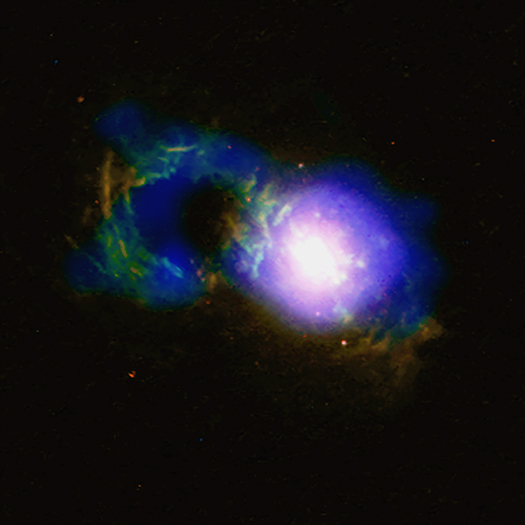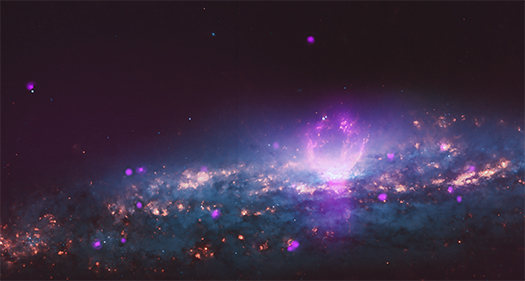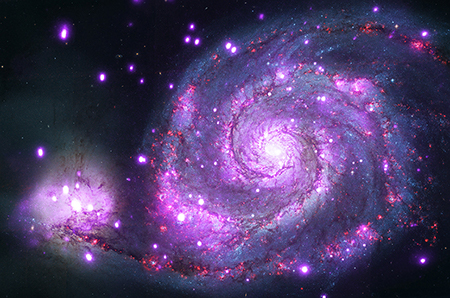Giant X-ray Chimneys and Selection Effects
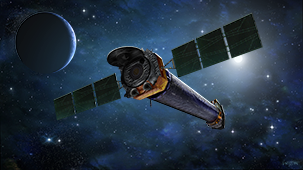
Astronomers frequently talk about selection effects, where results can be biased because of the way that the objects in a sample are selected. For example, if distant galaxies above a certain X-ray flux – the amount of observed X-rays – are selected for a survey, the most distant objects will tend to be the most luminous, in other words producing the most X-rays.
For doing Chandra publicity we also have a bias, as we are always on the lookout for results where NASA’s Chandra X-ray Observatory data play a starring role. However, there are many papers where Chandra has an important supporting role instead, and other observatories are the stars. Our colleagues at the European Space Agency (ESA) and the University of California, Los Angeles (UCLA), have put out press releases on just such a result.
Galactic Center Visualization Delivers Star Power
To look around, either click and drag the video, or click the direction pad in the corner.
(For more information and images, visit: https://chandra.si.edu/photo/2019/gcenter/)
Storm Rages in Cosmic Teacup
Credit: X-ray: NASA/CXC/Univ. of Cambridge/G. Lansbury et al; Optical: NASA/STScI/W. Keel et al.
Fancy a cup of cosmic tea? This one isn't as calming as the ones on Earth. In a galaxy hosting a structure nicknamed the "Teacup," a galactic storm is raging.
The source of the cosmic squall is a supermassive black hole buried at the center of the galaxy, officially known as SDSS 1430+1339. As matter in the central regions of the galaxy is pulled toward the black hole, it is energized by the strong gravity and magnetic fields near the black hole. The infalling material produces more radiation than all the stars in the host galaxy. This kind of actively growing black hole is known as a quasar.
NGC 3079: Galactic Bubbles Play Cosmic Pinball with Energetic Particles
We all know bubbles from soapy baths or sodas. These bubbles of everyday experience on Earth are only a few inches across, and consist of a thin film of liquid enclosing a small volume of air or other gas. In space, however, there are very different bubbles — composed of a lighter gas inside a heavier one — and they can be huge.
The galaxy NGC 3079, located about 67 million light years from Earth, contains two "superbubbles" unlike anything here on our planet. A pair of balloon-like regions stretch out on opposite sides of the center of the galaxy: one is 4,900 light years across and the other is only slightly smaller, with a diameter of about 3,600 light years. For context, one light year is about 6 trillion miles, or 9 trillion kilometers.
Hide and Seek: Tracking Down the Invisible Filaments

Orsolya Kovács
We welcome Orsolya Kovács, a third-year PhD student at the Eötvös Loránd University, Hungary where she obtained her MSc degree in astronomy, as our guest blogger. Currently, she is a pre-doctoral fellow at the Smithsonian Astrophysical Observatory, and is the first author on a recent paper on the WHIM featured in our latest press release.
I was working on a totally different subject before I started the missing baryon project with a small group of scientists at the Smithsonian Astrophysical Observatory (SAO) about two years ago. Before I came to the United States as a Ph.D. student, I was involved in analyzing optical data of variable stars observed at the beautiful Piszkéstető Station in the Mátra Mountains, Hungary. In my master’s thesis, I focused on the variable stars of an extremely old open cluster in the Milky Way, and at that time, I also got the chance to gain some observing skills from my Hungarian supervisor.
So the very beginning of my astronomy career was all about optical astronomy. But before getting really into optical astronomy and mountain life, I decided to interrupt this idyllic period, and find some new challenges: I wanted to spend part of my Ph.D. years learning X-ray astrophysics. With this in my mind, I applied to the SAO’s pre-doctoral program, and a few months later I arrived in Massachusetts.
Shortly after introducing me to the basics of X-ray astronomy, Ákos Bogdán at SAO proposed a crazy idea about how to observe the ‘invisible’, i.e. the missing part of the ordinary (baryonic) matter that could possibly solve the long-standing missing baryon problem. The missing baryon problem is related to the mismatch between the observed and theoretically predicted amount of matter.
Where is the Universe Hiding its Missing Mass?

WHIM Simulation
Credit: Illustration: Springel et al. (2005); Spectrum: NASA/CXC/CfA/Kovács et al.
New results from NASA's Chandra X-ray Observatory may have helped solve the Universe's "missing mass" problem, as reported in our latest press release. Astronomers cannot account for about a third of the normal matter — that is, hydrogen, helium, and other elements — that were created in the first billion years or so after the Big Bang.
Scientists have proposed that the missing mass could be hidden in gigantic strands or filaments of warm (temperature less than 100,000 Kelvin) and hot (temperature greater than 100,000 K) gas in intergalactic space. These filaments are known by astronomers as the "warm-hot intergalactic medium" or WHIM. They are invisible to optical light telescopes, but some of the warm gas in filaments has been detected in ultraviolet light. The main part of this graphic is from the Millenium simulation, which uses supercomputers to formulate how the key components of the Universe, including the WHIM, would have evolved over cosmic time.
Elaine Jiang

Elaine Jiang
My name is Elaine Jiang, and I am a current senior at Brown University studying computer science. I spent the first nine years of my life in Suffern, New York, and the following nine years in Shanghai, China, before coming back to the states for college. In terms of technology, I’m interested in artificial intelligence (AI), virtual reality, and ethical software design. Outside of computer science, I can be found teaching and mentoring students in science, technology, engineering, and math (STEM), going to spin classes, and exploring Providence's delicious brunch options.
My parents have always encouraged me to explore my interests in science and technology. When we lived in upstate New York, one of my favorite memories was going to the Museum of Natural History with my dad every year, looking at fossils and animals, and jotting down notes in my “science journal.” I’m really grateful to have been exposed to science at a young age, as this certainly led to my interest in becoming a STEM major.
During the summer after my sophomore year in college, I had the opportunity to do research with Tom Sgouros, who managed Brown’s Yurt Ultimate Reality Theatre. Tom introduced me to Kim Arcand from the Chandra X-ray Observatory, and we worked with her to render a three-dimensional model of supernova remnant Cassiopeia A into virtual reality. It’s been an incredibly rewarding experience, and I’m excited to see what we do next.
Cosmology with Quasars

Guido Risaliti
We are pleased to welcome Guido Risaliti as our guest blogger. Guido is the first author of a paper that is the subject of our latest press release. He is an astrophysicist whose main research field is the study of giant black holes in the center of galaxies. He got a Ph.D. from the University of Florence, Italy, in 2002. He then worked as a researcher at INAF - Arcetri Observatory from 2002 until 2015, and was a Research Associate at the Center for Astrophysics / Harvard and Smithsonian from 2002 to 2014. Since 2015, he has been an Associate Professor at the University of Florence.
For about 20 years I have studied the emission of quasars, the most luminous persistent sources in the Universe, powered by an “accretion disk” made of gas spiraling into a giant black hole. Quasars emit most of their radiation in the optical/ultraviolet (UV) band, through their accretion disk, and a small fraction in the X-rays, produced by a cloud of hot electrons called a “corona”. This corona needs a continuous flow of energy from the disk in order not to cool down and stop producing X-rays.
We do not know much about this energy exchange: a self-consistent model linking these two components has not been found yet. However, we have observed an interesting relation: the X-ray fraction of the total emission of radiation by quasars decreases with its luminosity. For example, if observing two quasars, we find that the first one is ten times more UV luminous than the second one, it will be only four times more luminous in X-rays.
The Whirlpool Galaxy Like You’ve Never Seen It Before
NASA's Universe of Learning, or UoL, provides resources and experiences that enable youth, families, and lifelong learners to explore fundamental questions in science, experience how science is done, and discover the Universe for themselves.
To make this goal a reality, this consortium of professional scientists, educators, visualizers, and more work together to create resources for anyone interested in learning about our Universe. The latest product from the UoL is a new visualization of Messier 51, also known as the Whirlpool galaxy. Located about 30 million light years from Earth, the Whirlpool galaxy is a spiral like our own Milky Way.
The Whirlpool Galaxy, M51
Credit: X-ray: NASA/CXC/Wesleyan Univ./R.Kilgard, et al; Optical: NASA/STScI
Chandra to Continue Operations During US Government Shutdown
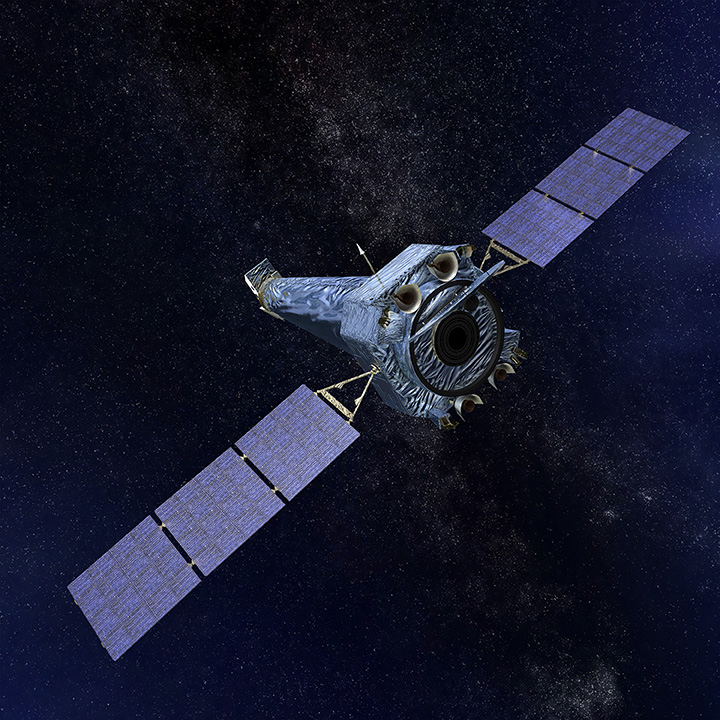
NASA has designated Chandra as "excepted" during the Government shutdown and requested that SAO continue Chandra X-ray Center (CXC) operations. Since NASA is unable to provide funding during the shutdown, the Smithsonian Institution has agreed to advance funding to continue science and mission operations through mid-March, as necessary.

